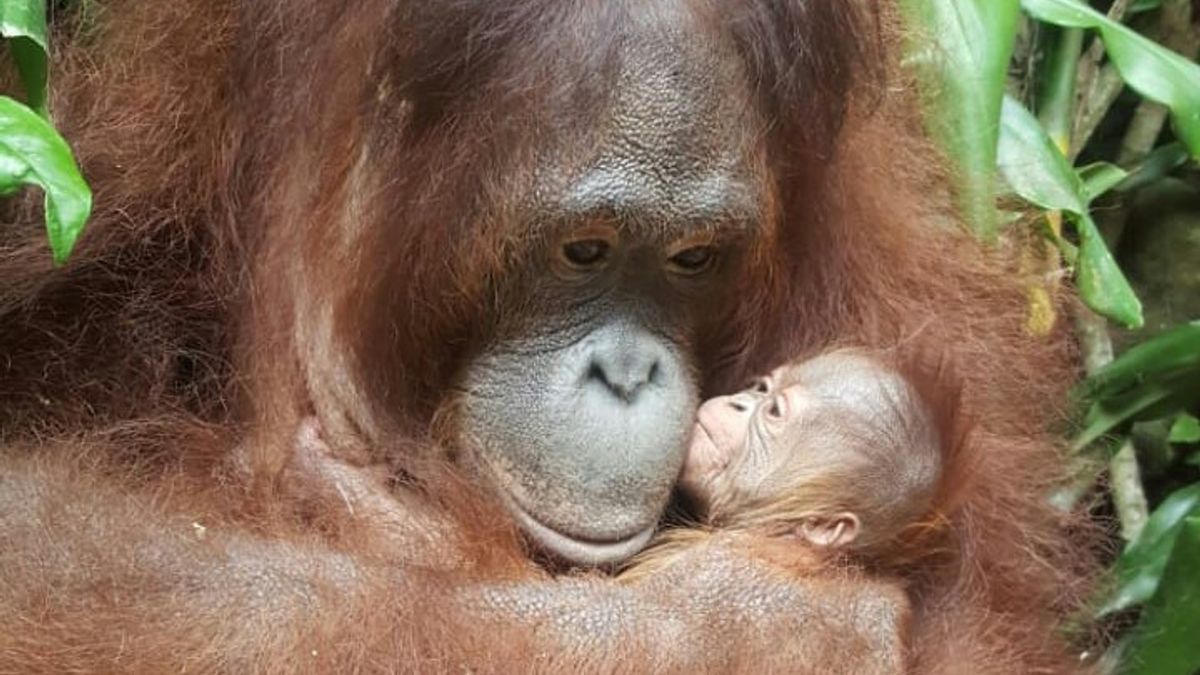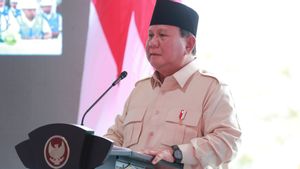JAKARTA - The Minister of Environment and Forestry, Siti Nurbaya, was very happy when she received the good news from the Conservation Institute (LK) Taman Safari Indonesia (TSI) Cisarua right on Eid Al-Fitr. The place has a new occupant, a female Bornean orangutan (Pongo pygmaeus).
"Alhamdulillah, on the happy day of Eid al-Fitr and at the same time concerned about the COVID-19 pandemic situation, a female orangutan was born at 05.00 WIB," Minister Siti Nurbaya told voi.id, Monday, May 25.
Because it was born on the day of victory, a special name was prepared by Siti Nurbaya for the baby orangutan. She was given the name 'Fitri'. This baby orangutan is the child of Evi and male Ipung. Fitri seems to be a complement to happiness. Last month, April 28, 2020, a gajar child was born in the same place. This elephant calf is named Covid because it was born when the world experienced the COVID-19 pandemic.

For your information, during the closure of the Conservation Institution and the ongoing Large-Scale Social Application (PSBB), many animals were born. Sumatran elephants were born in TSI Cisarua and Gembira Loka Yogyakarta. Then there are Komodo dragons (12 tails), Kasturi Raja birds (1 tail), Tarsiers (1 tail) in Faunaland Ancol, Cassowaries (3 tails) at R Zoo and Park in North Sumatra, as well as other exotic animals such as giraffes, zebras. and the common marmoset.
Siti Nurbaya said, this is a sign that the LK management has implemented animal welfare well. Thus, animals can reproduce naturally and have carried out their function as breeding grounds outside their habitat while maintaining genetic purity.
"It is hoped that through this controlled breeding program, the ex-situ link to in-situ conservation program can be carried out and in the end the increase in the in-situ population can be achieved," said Minister Siti.
This is also proven by the Ministry of Environment and Forestry by releasing 214,154 animals into their natural habitats from rehabilitation centers, rescue centers and other animal conservation units for the period 2016-2020.
Minister Siti explained the importance of managing populations of isolated species, connectivity of animal habitat pockets, and creation of new pockets to support population increase and metapopulation management.
"For this reason, I am developing a policy to encourage connectivity of new wildlife enclaves through the development of a protected area system that includes areas of high conservation value in forestry and plantation sector concessions. The Ministry of Environment and Forestry has identified 1.4 million hectares of conservation value areas. which can enter the protected area system, "explained Minister Siti.
At the species level, Indonesia has developed a road map for restoring a population of 25 target species that is endangered. Through more than 270 monitoring locations, several species populations have increased, such as the Bali Starling, Sumatran Tiger, Javan Rhino, Sumatran Elephant, and Javanese Eagle.
Then at the genetic level, Indonesia has promoted bioprospection for food safety and health, such as Candidaspongia for anti-cancer, and Gaharu for disinfectants, whose production has been increased during this COVID-19 pandemic.
The English, Chinese, Japanese, Arabic, and French versions are automatically generated by the AI. So there may still be inaccuracies in translating, please always see Indonesian as our main language. (system supported by DigitalSiber.id)













